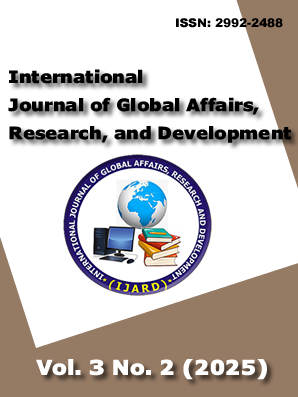ASSESSMENT OF HEAVY METAL CONTAMINATION IN DRINKING WATER SOURCES AT FEDERAL UNIVERSITY OF LAFIA, NIGERIA: IMPLICATIONS FOR PUBLIC HEALTH AND WATER RESOURCE MANAGEMENT
Keywords:
Heavy metals, FAAS, WHO guidelines, Nigeria, water contaminationAbstract
This study evaluated the concentrations of heavy metals—Copper (Cu), Chromium (Cr), Cadmium (Cd), Zinc (Zn), and Lead (Pb)—in drinking water sources across the Federal University of Lafia, Nigeria. Water samples were collected from male hostels, female hostels, and the mosque, then analyzed using Atomic Absorption Spectrophotometry. Results showed elevated levels of Pb (0.019 ± 0.041 mg/L) and Cu (0.099 ± 0.007 mg/L), particularly in the boys’ hostel. Chromium was least detected, while Zn and Cd appeared at moderate, consistent levels across all sites. Although concentrations were largely within WHO permissible limits, the presence of toxic metals raises public health concerns and emphasizes the need for regular water quality surveillance and infrastructural improvements on campus. It is recommended that periodic water treatment and maintenance of distribution systems be enforced to minimize contamination risks.
Downloads
Published
How to Cite
Issue
Section
License
Copyright (c) 2025 International Journal of Global Affairs, Research and Development

This work is licensed under a Creative Commons Attribution-NonCommercial 4.0 International License.
CC Attribution-NonCommercial 4.0 (CC BY-NC 4.0): This license allows others to download works from your journal and share them with others as long as they credit the author, but they can't use them commercially. They can create derivative works, but those derivatives must also be non-commercial and give appropriate credit.


